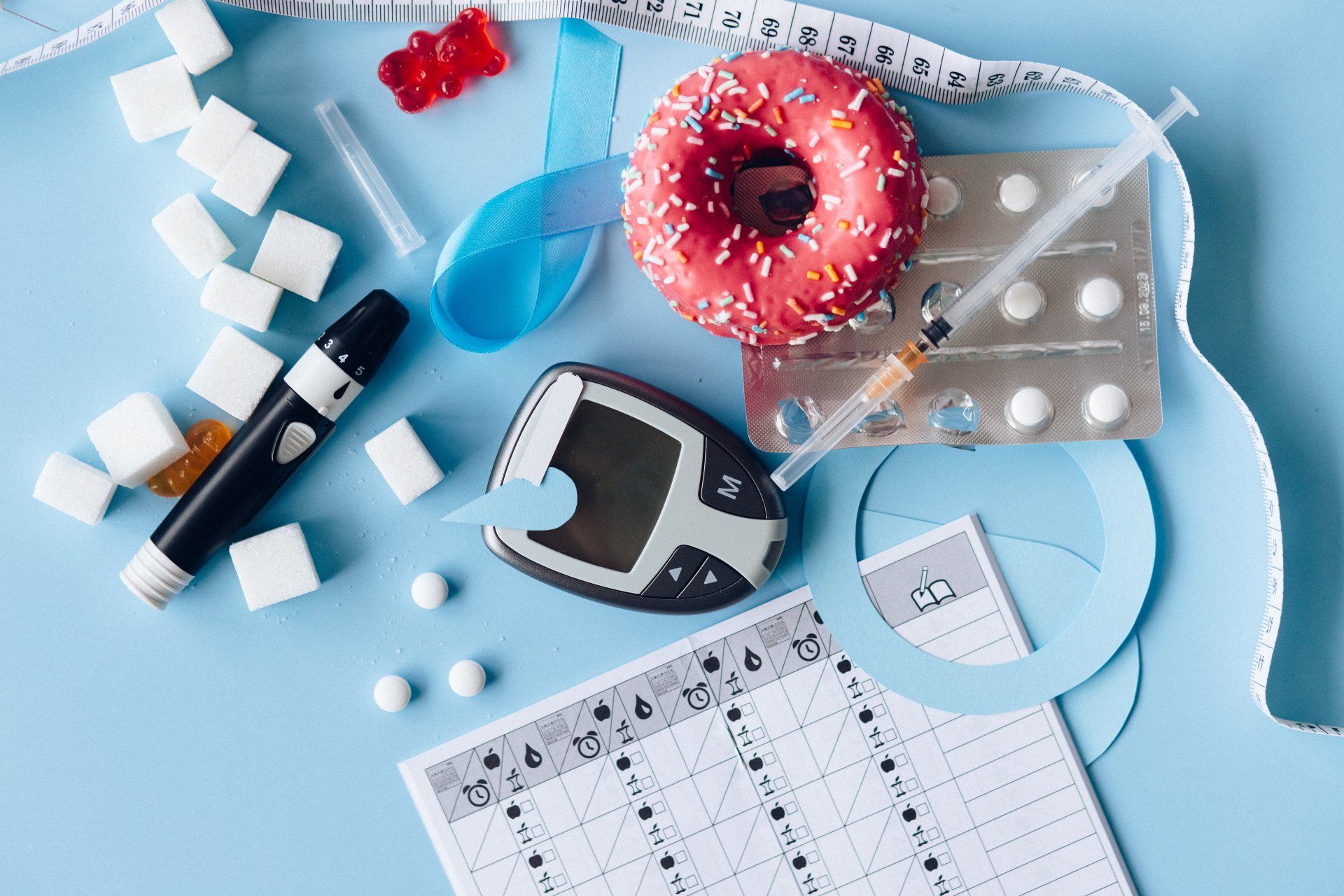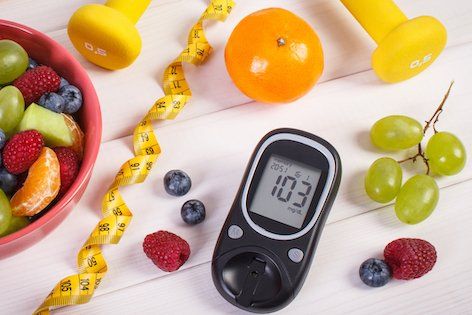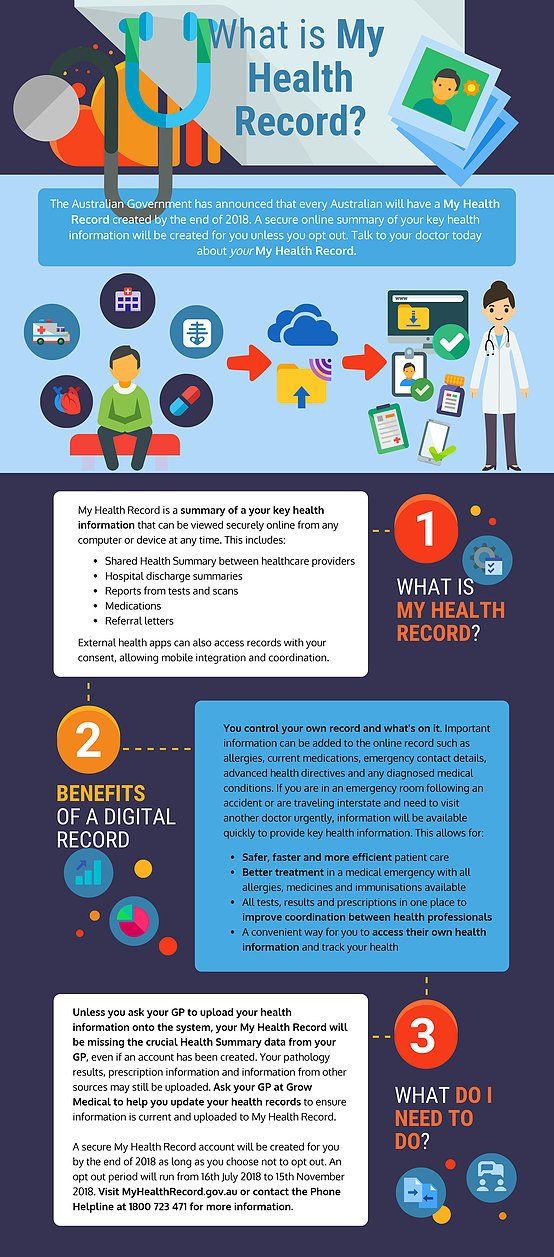Type 2 Diabetes: PART 2 – Say Hi to the GI
Welcome to part 2 of this two-part blog series covering everything you need to know about Type 2 diabetes!
Last time, we discussed what it means to have Type 2 diabetes, and spoke generally about how to manage the quantity of carbohydrate containing foods. If you have not yet read part 1 of this diabetes series, it would be a good idea to read up on that article which details Type 1 vs Type 2 diabetes, and Type 2 diabetes causes & symptoms.
This week- we will be talking about all things quality! I am sure you have heard the phrases “high GI” and “low GI” get thrown around... but have you ever wondered what GI actually stands for, what it means, and why it is important for people with type 2 diabetes? Well, read on to find out!
GI = Glycaemic Index
First thing to get clear- GI stands for glycaemic index. Glycaemic index is essentially a rating system for carbohydrate-containing foods. Each food is assigned a number from 1-100, which is indicative of how quickly or slowly it is digested and increases blood sugar levels over a period of time- usually 2 hours. This system uses white bread as a reference food, which has a glycaemic index of 100- making it a ‘high GI’ food. Generally speaking, a food is considered to be ‘low GI’ when it has a glycaemic index of 1-55 (green). A glycaemic index of 70 or higher means it would be categorised as a ‘high GI’ product (red), and anything in between would be a ‘medium GI’ (yellow). For example, multigrain bread has a GI of 48, making it a ‘low GI’ food choice. Refer to the image below for more information about what foods are found in what GI category.
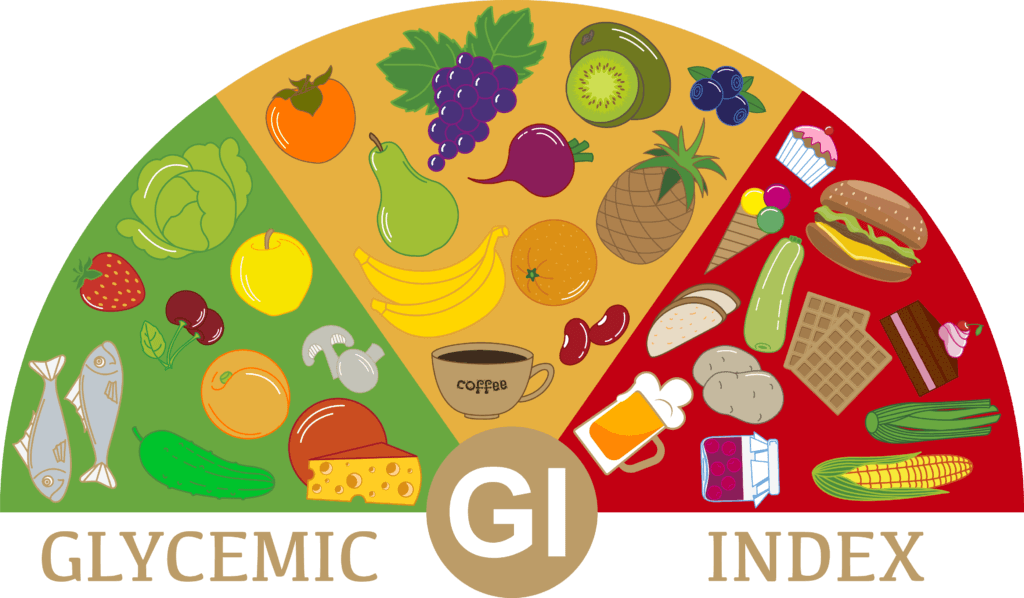
Glycaemic Index and Type 2 Diabetes
Now, you are probably wondering why that’s relevant to type 2 diabetes- so let's flesh that out! Recall from part 1 of this blog series how carbohydrate-containing foods influence our blood sugar levels. Let’s use our example of white bread compared to multi-grain bread to outline how high GI versus low GI foods affect our blood sugar levels.
Because white bread has a GI of 100, this means it is very quickly digested and absorbed into the bloodstream. The sugar from this bread enters our bloodstream all at once, which causes a spike in our blood sugar levels (as shown in the graph below). Normally, this would send signals to our factory (the pancreas), and so lots of keys (insulin) would get produced to unlock the cell doors so the sugar can enter and be removed from our bloodstream. This process decreases blood sugar levels back to within an acceptable range. However, excessive and frequent intake of high GI foods in individuals with type 2 diabetes can be damaging, and result in further progression of the disease.
Remember in type 2 diabetes our keys do not work as well in opening the cell doors (also known as insulin resistance), which means our blood sugar levels remain elevated (ie. above an acceptable range) for a longer period of time.
Conversely, when we eat multigrain bread (our low GI alternative with a GI of 48), it takes longer for our body to digest and absorb it. This means there is a slower and more steady release of the sugar from this food into our bloodstream. As you can see in the graph below, this allows low GI food choices to have a smaller impact on our blood sugar levels, meaning they should generally remain within the acceptable range. So, in people with type 2 diabetes (ie. people who have insulin resistance), low GI foods are generally less damaging and less likely to progress the disease than their high GI counterparts.
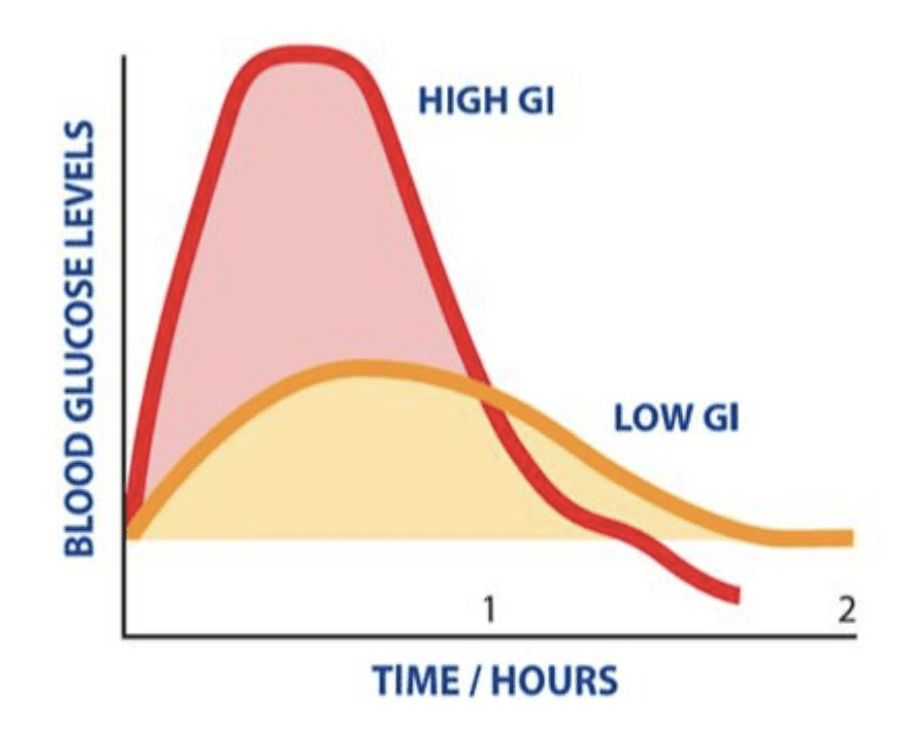
3 Top Tips To Avoid Type 2 Diabetes
- Switch to low GI alternatives.
- Look out for the brown/minimally processed/high fibre varieties. These are typically lower GI than their white/refined/low fibre counterparts.
- Cornflakes/rice pops -> muesli/oats
- Watermelon -> banana
- White bread/English Muffin -> multigrain bread/sourdough
2. Look out for the Low GI-certified stamp.
- On your next grocery shop, see if you can find any products labelled with this. This stamp implies it is a great choice for someone with type 2 diabetes
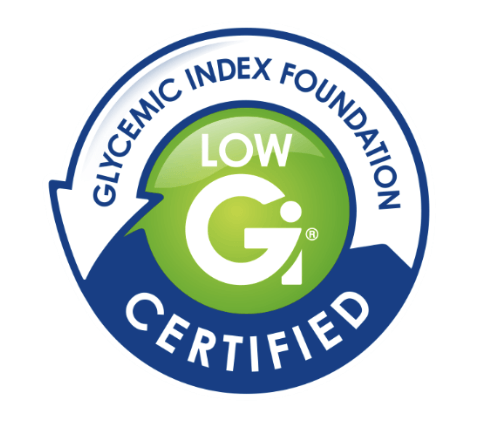
3. If a food product has less than 15g sugar/100g, put it in your trolley.
- Nutrition information panels can be confusing, convoluted and tricky to interpret at the best of times (we could dedicate an entire blog series to navigating your way around them)! However, the most important part to pay attention to for type 2 diabetes is the sugar content. When trying to decide what brand to choose from, look for the option that has the least sugar per 100g. If one has more than 15g per 100g, it might be a good idea to put it back on the shelf!
Key take-away on Type 2 Diabetes
As this blog series comes to a close, and all of this new information is whirring around in your head, the most important thing to remember is: The key to type 2 diabetes management is to keep our blood sugar levels within an acceptable range (ie. not too high and not too low!), and this can be done by considering the quantity and quality of carbohydrate intake.
Most importantly, it is possible to make simple adjustments to the type of food you are eating, just by choosing slightly different alternatives. Commit to doing this for three months, and you will notice lasting impacts on your health and diabetes control.
It is also worth noting that there is no need, nor is it encouraged to completely exclude all high GI foods from your diet forever, especially if they are some of your favourite foods! It is just important to acknowledge when you are consuming them, and keep it in moderation.
Want to know more on Type 2 Diabetes?
- If you already have a Type 2 Diabetes diagnosis, become a member of Diabetes Australia for ongoing support and resources. Use this link to join: https://www.diabetesaustralia.com.au/
- Make sure you follow us on social media to keep an eye out for when the next diabetes group sessions will be. These are run by our dietitian Jessica Cartwright.
- If this blog has got you thinking about your sugar levels and you have no clue what they are - book an appointment with one of our GPs to find out more.
- Finally, please keep in mind the contents of this blog form general information and recommendations only. If you are wanting advice tailored to your lifestyle, book an appointment with our dietitian.
More Articles on Diabetes
Connect
Clinicians: please forward clinical correspondence via Medical Objects Secure Messaging. Fax no longer accepted.


